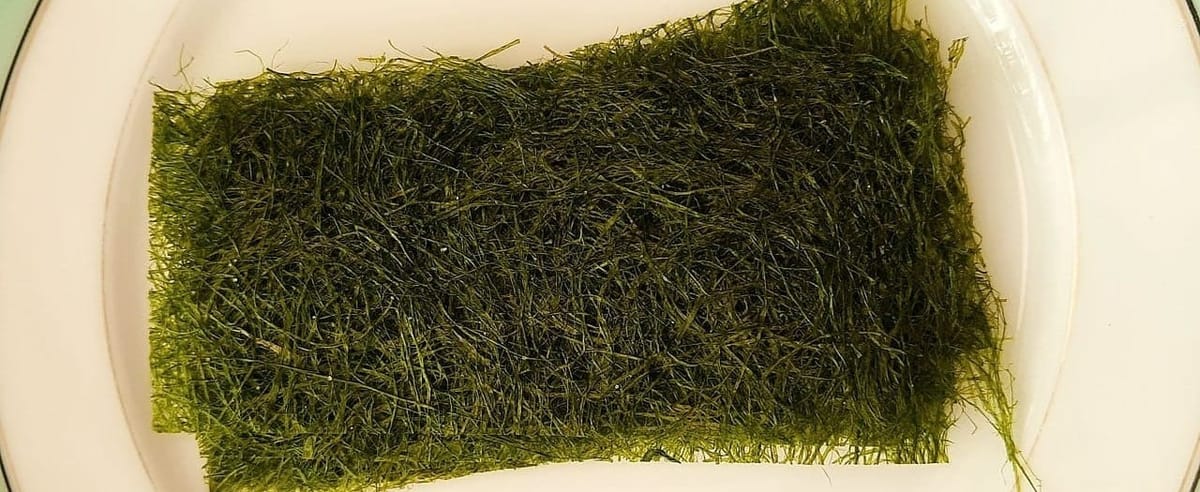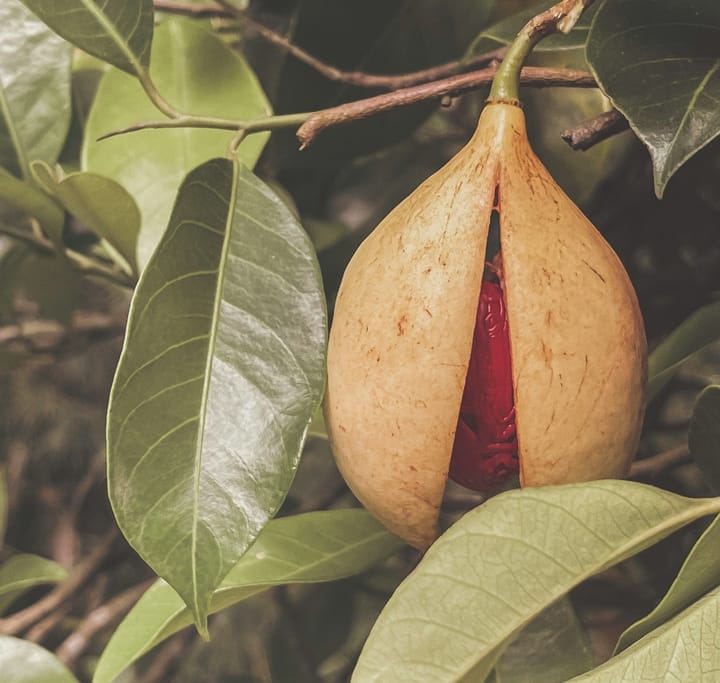Why Is Korea's Gamtae Seaweed So Expensive?
Gamtae, one of South Korea's rarest seaweeds traditionally harvested in the Seosan region, has become a favorite among Michelin-starred chefs globally, but its unpredictable harvests and rising prices make it a challenging and costly ingredient to cultivate commercially.

Gamtae, one of South Korea's rarest seaweeds, has been harvested and eaten raw by locals in the Seosan region for centuries.
Today, it has become a favorite among Michelin-starred chefs both in South Korea and around the world.
However, the unpredictable nature of Gamtae harvests and its rising prices have posed challenges in expanding this small industry into a thriving business.
What is Gamtae Seaweed?
Gamtae (감태) is a unique type of seaweed harvested primarily from the pristine waters off the coast of Korea.
Unlike more common seaweed varieties like nori, gamtae (Ecklonia cava), brown algae is known for its delicate texture and distinct flavor.
This seaweed is often described as having a silky, almost noodle-like quality and is prized for its subtle, umami-rich taste.
How Much is Gamtae Seaweed?
Initially, Gamtae seaweed was priced at 100,000 won per kilogram, which is approximately 79 USD.
Due to its increasing popularity and the recognition of its high quality, the price has since tripled.
This rise reflects the growing demand among chefs and food enthusiasts, driven by the seaweed's unique texture, flavor, and the traditional artisanal processing methods used to produce it.
Gamtae Flavor Profile
Gamtae seaweed boasts a unique flavor profile that is earthy, slightly sweet, and rich in umami.
Its delicate, almost ethereal texture adds a refined touch to dishes, making it a prized ingredient in gourmet cooking.
The subtle sweetness and savory depth enhance a wide variety of culinary creations, from salads and soups to more intricate, high-end dishes.
Why is Gamtae Seaweed So Expensive?
Several factors contribute to the high cost of Gamtae seaweed:
Labor-Intensive Harvesting Process
Gamtae seaweed is incredibly delicate, with a fine structure that can easily be damaged by mechanical harvesting methods.
To maintain its quality and unique texture, it must be harvested by hand. This careful approach prevents tearing and preserves its natural form.
The roots of Gamtae are fragile and essential for regeneration. Hand harvesting allows precise handling, keeping the roots intact and sustaining the seaweed population.
The mudflats of Garorim Bay, where Gamtae grows, present a challenging environment.
The tidal patterns and nutrient-rich yet fragile ecosystem require a gentle, hands-on approach. Harvesters carefully navigate these conditions to collect the seaweed without disrupting the habitat.
Limited Growing Regions
Gamtae seaweed grows in the mudflats of Garorim Bay, located on the southern coast of Korea.
Garorim Bay is renowned for its pristine coastal environment, which provides ideal conditions for Gamtae cultivation.
The mudflats in this region are nutrient-rich and characterized by their unique tidal patterns, which support the growth of various marine plants, including Gamtae.
These mudflats are regularly submerged and exposed by the tides, creating a dynamic environment that fosters the growth of high-quality seaweed.
The combination of clean water, ample sunlight, and the nutrient-dense mudflat ecosystem contributes to the exceptional quality of Gamtae.
The seaweed is typically harvested during the winter months, from November to March, when it reaches its peak nutritional value and flavor.
Seasonal Availability
Gamtae seaweed is seasonally available, typically harvested during the spring and early summer months when conditions are optimal for growth.
This period ensures the seaweed is at its peak quality, offering the best flavor and nutritional value.
The timing of the harvest is crucial to maintain the delicate balance of the ecosystem and to allow the seaweed to regenerate for future seasons.
Artisanal Processing
After harvesting, Gamtae seaweed requires artisanal processing, which involves arranging it into thin sheets.
This meticulous task demands three years of training to ensure the seaweed is not hollow, overly thin, or too thick.
The precise preparation enhances its texture and quality, making it highly prized by chefs.
This traditional skill underscores the importance of craftsmanship in Gamtae's production, contributing to its unique appeal in the culinary world.
Nutritional and Health Benefits
Gamtae seaweed offers numerous health benefits. It is rich in essential nutrients such as vitamins A, C, and E, and minerals like iodine, calcium, and iron.
Additionally, it contains antioxidants that help combat oxidative stress and support overall health.
The high fiber content aids digestion, and its anti-inflammatory properties can contribute to improved wellness.
Including Gamtae in one's diet can enhance nutritional intake and promote better health.
Popular among Michelin-starred Chefs
Gamtae is gaining popularity among Michelin chefs particularly in France due to its unique texture, umami flavor, and versatility in dishes.
Chefs value its delicate quality and nutritional benefits, as well as its sustainable harvesting practices.
Introducing uncommon ingredients like Gamtae allows chefs to innovate and create distinctive culinary experiences, enhancing the appeal of their dishes.
This trend towards using rare and high-quality ingredients aligns with the high standards of Michelin-starred cuisine.
Culinary Uses of Gamtae
Traditional Uses:
- Raw Consumption: Traditionally, Gamtae has been eaten raw, often paired with rice or used in simple salads.
- Soups and Broths: It is commonly added to soups and broths, imparting an earthy flavor and enhancing the umami profile of the dish.
- Side Dishes: Served as a side dish (banchan) in Korean cuisine, sometimes seasoned with sesame oil and garlic.
- Rice Wraps: Used to wrap rice and other ingredients, creating a nutritious and flavorful bundle.
Modern Uses in Michelin Restaurants:
- Gourmet Salads: Incorporated into sophisticated salads, leveraging its delicate texture and subtle sweetness.
- Plating and Garnishing: Used as a garnish for a variety of dishes, adding visual appeal and a hint of umami.
- Seaweed Crisps: Turned into crispy snacks, offering a refined alternative to traditional seaweed snacks.
- Infused Oils and Sauces: Used to infuse oils and create sauces, lending its distinctive flavor to other components of a dish.
- Seafood Pairings: Complements seafood dishes such as scallops, fish, and shellfish with its earthy undertones.
- Innovative Fusion Dishes: Incorporated into fusion cuisine, blending Korean and international flavors.
- Pasta Dishes: Used in pasta, combining traditional Korean elements with contemporary cuisine to create a unique and flavorful dish.
Gamtae seaweed represents the pinnacle of quality in the world of edible seaweeds.
Its high price reflects not only its rarity and the labor involved in its production but also its exceptional culinary and health benefits.
For those who seek the finest ingredients, Gamtae offers a taste of the ocean's luxury, embodying the essence of Korean gourmet tradition.


